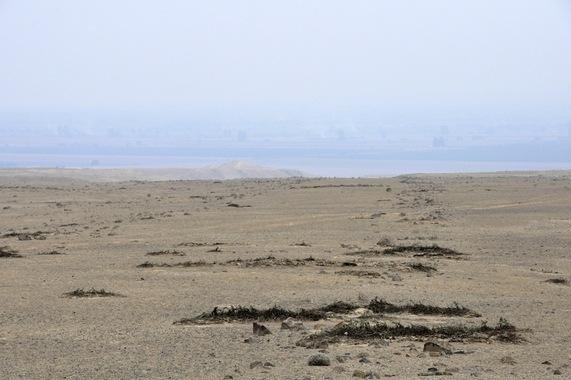Two of the 2300-year-old rock lines. (Charles Stanish)
LOS ANGELES, May 6 (UPI) -- Everyone loves a good fair, even the ancient Paracas people of Peru. In fact, they littered the desert with stones just to make sure everyone got there safe, sound and on time.
The Paracas people populated modern day Peru's Chincha Valley from 800 to 100 B.C. The Paracas, like their cultural ancestors, the Nazca, had a habit of building geoglyphs, a large motif constructed of rocks and other durable natural elements. Geoglyphs are found throughout history, and served practical purposes nearly as often as artistic ones.
A new study, published in the Proceedings of the National Academy of Sciences, credits the Paracas with two types of geoglyphs, each acting like signposts helping lead the way to an ancient gathering place -- somewhere akin to modern day fairgrounds.
One method included scattering rocks in a long line. The other involved scraping the dark desert soil off the bright limestone underneath, forming an apparent white line. In both cases, study author Charles Stanish confirmed the giant lines would have been easily visible to those descending the hills of the valley 2000 years ago.
"They’re converting this landscape into a big theater, and the ultimate goal is to bring people together to market, exchange goods, manufacture goods, exchange marriage partners, gossip, do all the things people like doing," added Stanish, an archaeologist at the University of California.
Stanish and his research colleagues also discovered three large mounds, which they deduced served ceremonial purposes. The mounds correspond with pairs of geoglyphs that would have guided ancient people in the direction of the sunset on the winter solstice in June.
Because there is no evidence that the Paracas lived near the mounds, Stanish concluded that they served as central gathering places.
"When you stand behind the mounds and you’re facing the sunset -- and we were there for the solstice -- the sun sets right on the mound. And if you’re a human being standing there, the sun melts right on your head. It’s pretty impressive."















